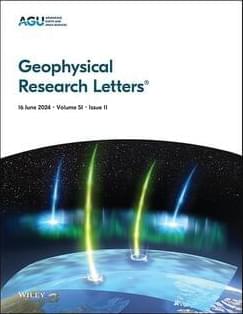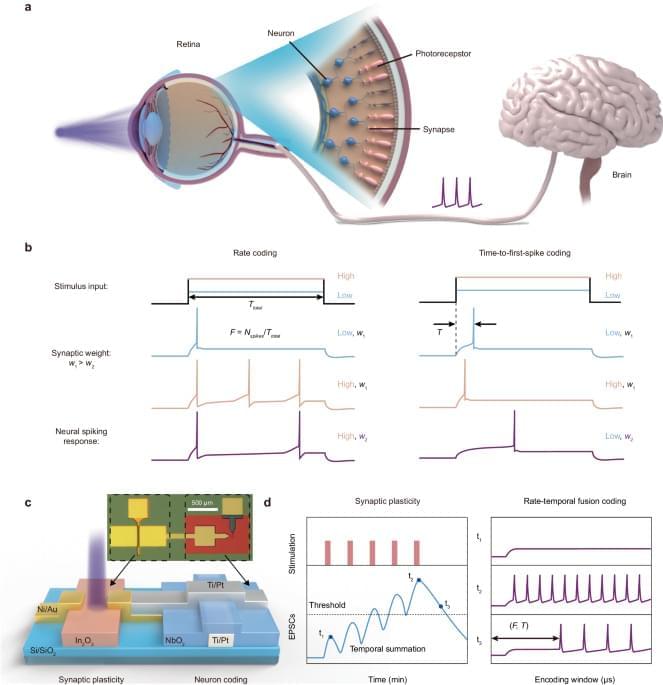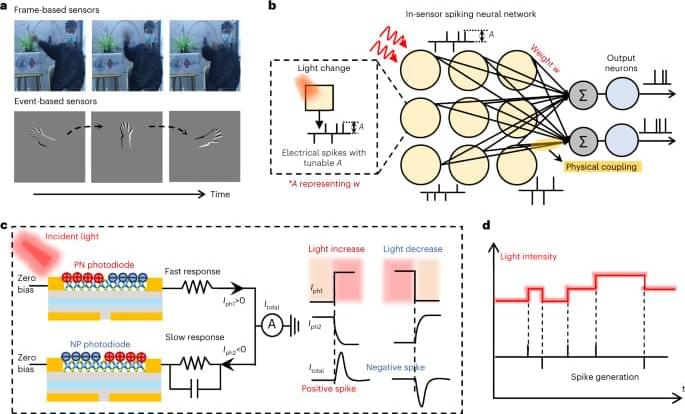Brighter with Herbert.
Category: transportation – Page 66

AI is rapidly identifying new species. Can we trust the results?
Scientists are using artificial intelligence (AI) to identify new animal species. But can we trust the results?
For now, scientists are using AI just to flag potentially new species; highly specialized biologists still need to formally describe those species and decide where they fit on the evolutionary tree. AI is also only as good as the data we train it on, and at the moment, there are massive gaps in our understanding of Earth’s wildlife.
Free ride without raising a thumb: A citizen science project reveals the pattern of active ant hitchhiking on vehicles and its ecological implications
Second, ants need to climb or hold onto the vehicle after locating it. The metallic paint on the vehicle surface is slippery and may potentially select for species with good climbing/gripping abilities. The climbing and moving performance of ants is determined by the morphological characteristics of leg segments (Beutel et al., 2020). Arboreal ants have hooked pretarsal claws, well-developed adhesive pads and fine tarsal hairs, allowing them to walk on smooth vertical substrates. Ground-dwelling ants, on the contrary, are less capable of moving on smooth surfaces such as vehicle paint because of their straight pretarsal claws and the lack of adhesive pads and tarsal hairs (Orivel et al., 2001).
Third, the temperature on the surface and in the interior of the vehicle can increase dramatically when exposed to sunlight, especially in the summer, indicating the thermal tolerance of hitchhiking species may play an important role in determining their colonisation success (Nixon et al., 2019). Arboreal ants are generally more heat-and drought-tolerant than ground-dwelling ants are (Hood & Tschinkel, 1990 ; Leahy et al., 2022), which could potentially translate into a higher probability of successful establishment at the destination due to better survival chance with high temperatures on or in the vehicle.
It is likely that ant hitchhiking events would be much more common than what has been reported through our Facebook group. We suspect that whether vehicle owners are aware of the Facebook group and/or vehicle owners are willing to report their observations to our Facebook group would play a critical role in the number of incidents we received for this citizen science project. Nonetheless, we were able to record at least 52 hitchhiking cases with complete information over a 7-year period. Despite a relatively small dataset, the estimated sampling completeness was appropriate (Figure S3). To our knowledge, this is the first report profiling active ant hitchhiking on vehicles via citizen science efforts, highlighting the importance of establishing a predictive framework for forecasting future hitchhikers based on behavioural, morphological, physiological and ecological traits of ant species. Such a framework will help facilitate the development of effective management strategies for mitigating ant invasions via active hitchhiking on vehicles.

Third‐Order Structure Functions of Zonal Winds in the Thermosphere Using CHAMP and GOCE Observations
We use multi-year observations of cross-track winds (u) from the CHAllenging Minisatellite Payload (CHAMP) and the Gravity Field and Steady State Ocean Circulation Explorer (GOCE) to calculate third-order structure functions in the thermosphere as a function of horizontal separation (s). They are computed using the mean (〈δu3〉) and the median (〈δu3〉med) left(langle \delta {u^3\rangle }_text{med}\right)$ and implemented over non-polar satellite paths in both hemispheres. On height averages, 〈δu3〉 is shown to scale with s2 for s ≃ 80–1,000 km, in agreement with equivalent estimates in the lower atmosphere from aircraft observations. Conversely, 〈δu3〉med langle \delta u^{3\rangle }_text{med}$ follows an s3 power law for almost the whole s range, consistent with the two-dimensional turbulence scaling law for a direct enstrophy cascade.

The Future of Technology: Impact on Labor, Economy, and Society
Disruptive innovations in technology, such as humanoid robots and electric vehicles, will lead to significant changes in labor, economy, and society, posing both opportunities and challenges for the future.
Questions to inspire discussion.
What are the predictions about the future of electric vehicles?
—The video discusses accurate predictions made by Tony Seba and his team about the future of EVs, which the media has not reported on.
Startup unveils robotic system that use AI-eyes to fix EV damages
Kinetic Automation utilizes computer vision and machine-learning software for diagnosing and recalibrating advanced vehicle systems.

An artificial visual neuron with multiplexed rate and time-to-first-spike coding
Human visual neurons rely on event-driven, energy-efficient spikes for communication, while silicon image sensors do not. The energy-budget mismatch between biological systems and machine vision technology has inspired the development of artificial visual neurons for use in spiking neural network (SNN). However, the lack of multiplexed data coding schemes reduces the ability of artificial visual neurons in SNN to emulate the visual perception ability of biological systems. Here, we present an artificial visual spiking neuron that enables rate and temporal fusion (RTF) coding of external visual information. The artificial neuron can code visual information at different spiking frequencies (rate coding) and enables precise and energy-efficient time-to-first-spike (TTFS) coding. This multiplexed sensory coding scheme could improve the computing capability and efficacy of artificial visual neurons. A hardware-based SNN with the RTF coding scheme exhibits good consistency with real-world ground truth data and achieves highly accurate steering and speed predictions for self-driving vehicles in complex conditions. The multiplexed RTF coding scheme demonstrates the feasibility of developing highly efficient spike-based neuromorphic hardware.

This Autonomous Solar-Powered Aircraft Will Fly for 90 Days Straight
face_with_colon_three year 2021.
The solar aircraft is made by a Spanish-American aerospace startup called Skydweller Aero. Based in Oklahoma City, the company raised $32 million in its Series A funding round, led by Italian aerospace firm Leonardo.
“For us, if you’re flying 90 days with one aircraft, that’s two takeoffs and landings versus … hundreds,” Skydweller Aero co-founder John Parkes told Aviation Today. “Being able to fly thousands of miles, persist over an area for 30–60 days and fly back is a differentiator. It’s a huge cost savings to the US government when you look at the whole cost of doing a lot of the national security missions that we have.”
The plane will stay airborne thanks to 2,900 square feet of photovoltaic cells that will blanket its surface, generating up to 2 kilowatts of electricity. As a backup in case it’s cloudy for a few days in a row, the plane will also be equipped with hydrogen fuel cells (maybe they’re not as “extremely silly” as Elon Musk thinks).